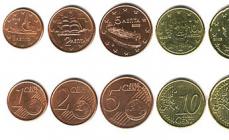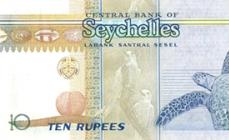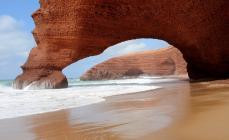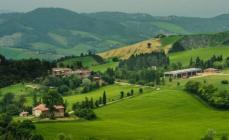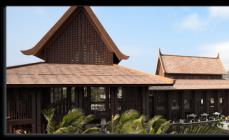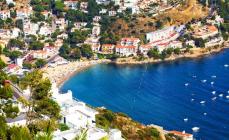Owning a small cabin boat - a self-propelled floating dacha - is the dream of many. The parking location of such a dacha can be changed; We have many rivers and lakes and the banks of most of them are very beautiful. The appeal of life on the water is undeniable.
What requirements must it satisfy? self-propelled dacha minimum sizes?
It should have sleeping places, a place for cooking, a table with seats around it, open area- to bask in the sun or dry off after swimming; It is advisable to have a latrine. Finally, a dacha boat should be inexpensive and accessible to everyone. At a minimum, a boat-dacha is designed for two people, but in most cases it is necessary to provide two more places for children.
At the stern of such a vessel there is a sleeping cabin, in which two folding beds made of aluminum tubes are placed along the sides. Under the aft window in the cabin there is a narrow table, which simultaneously adds rigidity to the aft bulkhead. The table in the middle part can be made sliding. On the opposite wall of the cabin there is a sliding door and a clothes hanger. You can hang curtains on the windows, and install shelves for books in the spaces between the windows.
In the bow there is a saloon (also known as the wheelhouse, dining room, living room, etc.). There is a table in the middle of the cabin, and on the left is the helmsman's seat with a steering wheel and engine control levers. The table, as in the sleeping cabin, can be extendable. The salon can also accommodate two beds for children (or for guests).
Between the sleeping cabin and the salon on the port side there is a galley. The galley has shelves for dishes and food. If you remove part of the kitchen table, a tourist gas stove or kerosene stove can be installed in the opening that opens. On the right is a small sink; it is used for washing dishes, and on cold days, when you can’t swim, for washing.
On the starboard side between the sleeping cabin and the salon there is a latrine toilet with an open hole, without flushing. When sailing along the canal, it is replaced by a bucket.
For ease of mooring to the shore, there is a wide open area in the bow; It is convenient to go ashore or swim from it.
Outboard motors are offered as engines for the holiday boat.
The desire to make dacha boats as fast as possible led to the use of planing contours. High superstructures require the use of a wide, stable hull. A solution was found in the use of a two-body design, in which each of the bodies can be as narrow as desired. The use of two engines in a two-hull design is logical and convenient.
Description of the design. The structural basis of a double-hulled summer cottage boat is a platform to which two floats are attached below and a cabin on top. The lateral rigidity of the platform, which has a thickness of 100 mm in the middle part and 200 in the bow, is ensured by light beams placed at 300 mm intervals, two internal bulkheads, as well as the front and rear walls of the cabin. The longitudinal rigidity of the platform is provided by the sides of the floats and the longitudinal walls of the cabin.
Each of the two floats has two bulkheads or consists of three separate parts - bow, middle and stern. Parts of the floats are molded from hydrophobic glass fiber on polyester resins. The small width of the floats allows them to be made without frames; the strength of the floats is ensured by end bulkheads and keelsons, glued into the floats in finished form. The floats have a simple shape (except for the bottom of the bow) and small sizes, which simplifies their manufacture.
It is also possible to make floats from waterproof plywood. The contours of the bow in this case can be obtained by gluing a layer of foam plastic onto the plywood bottom, which is then processed according to templates taken from the theoretical drawing and pasted over with fabric. The bottom of the bow can also be laminated from veneer.
The aft part of each float has a cutout offset to the bottom plane of the boat for installing an outboard engine and a fenced-off box to protect the rest of the float cavity from flooding with water. The transom of the aft part of the float is reinforced and adapted for mounting an engine on it.
The outer perimeter of the platform serves as a fender and is edged with a strip of durable material. To protect it from water, the plywood covering of the platform is covered with a fabric based on polyester resin.
The walls of the cabin up to the windows consist of plywood edged panels, the middle part is made of frames into which glass or plexiglass on rubber profiles is inserted. The roof is glued out of fiberglass on a square lattice of foam profiles, edged with strips of plywood at the bottom. In case of difficulties with gluing, the roof can also be made from bent sheets of plywood.
The sliding doors of the cabins (two external ones, one to the latrine and one to the sleeping cabin) are installed on plastic runners.
The aft part of the cabin hangs over the transoms of the floats, and therefore the upper parts of the outboard motors are inside the cabin and are accessible beyond it. To reduce the penetration of odor into the cabin, the upper parts of the engines are enclosed in box-casings protruding above the cabin floor.
The results of speed calculations based on the values of the stop measured during tests of the Moscow engine are presented in the form of a graph. As can be seen from this graph, when running under one Moskva engine, with any displacement of the dacha boat, its speed will fluctuate from 12 to 14 km/h. With two engines, the speed of the boat, depending on the displacement, increases to 27-35 km/h. In order to total weight The dacha vessel does not exceed 720 kg (in this case, a speed of 35 km/h can be obtained); it should be built easily and without any frills. The approximate weight distribution (in kg) between the individual parts of the vessel is as follows.
Two floats................................................... ...............144
Platform................................................. ...................132
Cabin................................................. ...........................136
Engines with half fuel reserve......84
Camping equipment and personal belongings...................................74
Two passengers................................................... ...............150
Total 720
If two more passengers are taken on board and the total weight rises to 870 kg, the speed will drop to 27 km/h, which, ultimately, is not so bad.
The stability of a double-hulled vessel, in which the maximum displacement of each float is more than three times the normal load on it, is obviously sufficient. On the move, due to the influence of dynamic forces, stability increases. Double-hulled ships roll along with the waves, like a raft, since their own period of oscillation is very small.
If desired, you can build an even smaller vessel with approximately the same characteristics, but with one Moskva outboard engine. This kind of cottage boat is built without a cabin, with one platform on which you can put a tent. All dimensions of the floats according to the given theoretical drawing should be reduced by 1.26 times. total length the waterline will be 4000 mm instead of 5040, the full width along the floats will be 2330 instead of 2940, and so on.
The lower part of the graph shows the resistance of a vessel of such reduced dimensions for a displacement of 436 and 360 kg.
The boat, trailer, and floating house “Don” have been produced at the Gorky Aviation Plant (now JSC NAZ Sokol) since 1978. “Don” is a multifunctional device, the main purpose of which is to organize recreation near and on the water. The transformable boat can be used both as a cargo trailer, and as a house for temporary living in nature, and as a motor vessel. At the same time, both the entire hull and its bow can be used as a boat.
Frame
Structurally, “Don” consists of two sections with a hinged fastening in the upper part. The body is made of duralumin. The transverse frame is made of frames, there is no longitudinal frame, and rigidity is provided by steps and stiffeners molded into the sides. The connections of the body elements are made with rivets.
Boat 5 meters long
You can use the Don as a full-size boat by rigidly connecting both sections. The catamaran contours of the bow are smoothed by a hydraulic shield for a smooth transition to the flat-bottomed stern section. In this version of the boat, you can install remote steering, which somewhat reduces the usable area when using the Don as a tent. 
The transom of the boat allows you to install an outboard motor with a power of up to 30 hp. The speed of the boat can reach 37 km/h. Despite the significant stability of the boat when stationary, its seaworthiness is far from ideal. The navigation area is limited by the manufacturer to inland waters with a wave height of up to 0.3 meters and a distance from the shore of up to 1 km. 
Boat 3 meters long
The front section of the Don boat can be used separately. In this version, the dimensions of the boat are also not optimal, and to reduce the dolphin effect of an almost square vessel, transom plates with buoyancy cavities are used. In this form, the boat is capable of planing at speeds of up to 42 km/h and even pulling a skier with the same maximum 30-horsepower engine. 
Plavdacha
Both sections of the Don are about 2.5 meters long, which makes it quite comfortable to sleep in it for the night. For this purpose, instrument seats are provided. The kit in Donom offered a two-section awning, separate for the front and rear parts. The awning is installed on the aluminum ribs of the skeleton, which rises almost one and a half meters above the side. If the vacationing party is small, you can take the stern part as a tent and leave it on land. Use the bow section on the water. 
The total area of the assembled sections of the floating house is 8.5 square meters and can accommodate up to 6 people overnight. The hydraulic shield attached to the bottom can be used as a table.
Trailer
The body of the trailer is the stern section of the Don. Wheels with suspension with spring-hydraulic shock absorbers are attached to it. The drawbar is removable and attached directly to the body of the trailer boat. Many owners upgrade their trailer suspension to improve its reliability. When transporting a boat, its bow is laid on top of the stern. The space between the bow trim and the aft bulkhead is covered with the same hydraulic shield. The weight of the bow section is more than 70 kg. A minimum of two people are required to disassemble the boat. 
Conclusion
The “Don” floating boat trailer was sold at a price of 2,300 rubles and was produced in relatively small quantities. Currently, the popularity of this model is not subsiding and the cost of such a transformer on the secondary market, depending on condition, reaches 150 thousand rubles*
*year 2014.
The project of this floating dacha on the basis of a 9.5-meter water-jet boat with simplified contours, it was developed by Y. Kobachevsky. He also built a high-quality hull with double diagonal skin made of pine boards, lined on the outside with 3-mm sheets of AMg-3 alloy. Finish building floating house I happened to. This task was complicated by the fact that after the death of the designer, all the sketches and diagrams he made were lost.
To some extent, the vessel is similar to the Beryozka, the design of which was published in the third issue of Boats and Yachts (1964), but, as it turned out, the hull was designed long before the publication of the collection, but during the completion and equipment of the Yanta Information from “KiYa” and all available materials were widely used.


An anchor chain 20 m long and two are stored in the forepeak. In the bow there is a “veranda” with two sofa-lockers on the sides, covered with a light duralumin awning of two halves connected on a piano hinge.
The superstructure has dimensions in plan of 5.0X3.0 m. Its walls and roof are made of bakelized plywood 10 mm thick; The roof is covered with epoxy resin. Wall height 1100 mm. Since the horizontal flooring (floor) is lowered below the deck (300 mm from the OL), the height of the premises is equal to 1800 mm. For thermal insulation, a layer of foam plastic is laid along the walls and ceiling. The internal lining is made of decorative mahogany plywood and plastic with layouts along the beams. The side windows of the cabin are made like trolleybus windows with roll-down windows, the front observation windows are made of plexiglass.

The aft cabin, separated from the salon by a sliding metal door, is equipped with built-in wardrobes for various purposes, hangers and shelves. There is also a kitchen table with shelves, a gas stove and a sink with hot and cold water. Nearby there is a combined bathroom - shower and latrine.
In the stern - in the engine compartment - there is a 45-horsepower Skoda 1201 automobile engine with an additional casing on the exhaust manifold for heating water. Two gas tanks with a capacity of 80 liters are suspended below the deck; Canisters and an inflatable boat - tuzik - are also placed here. The Yanta deck is covered with corrugated rubber mats on glyphthalic varnish.
The driver's position is located on the left side in the bow cabin, near the front window. A light lantern made of plexiglass is made above the driver's head.
For two years, in winter and summer, our whole family worked with great enthusiasm on completing and equipping the floating dacha. And now the long-awaited moment has come for the Yanta to set sail for the first time. What can we say in general about our ship? This is a reliable and comfortable houseboat. Due to the high cabin, the Yanta has a large windage, so the speed is directly dependent on the strength and direction of the wind and ranges from 15 to 20 km/h. Large weight causes significant inertia. We also had to get used to the peculiarities of controlling the ship due to the reaction of the water cannon jet.
The Don boat is a vessel with an interesting “floating dacha” concept. Manufacturing began in 1978 at the aircraft plant named after. S. Ordzhonikidze. Already in the first year, 500 Don floating boats were produced. The design was in great demand due to its small size, ease of transportation as a trailer, and installation of an awning-tent instead of a fixed rigid structure. The material of manufacture is duralumin. By combining lightweight material and a deckless hull, the vessel turned out to be light.
general description
The Don boat is perfectly suited for transportation as a trailer. Can be fixed to all types of small cars. It has become actively used in various fields of application. Most often it was installed as a house for 4 people near river banks. Despite its specific purpose, the device is completely autonomous and can be moved by a 30 hp motor. With. The “Don” boat is a vessel with an interesting “floating dacha” concept
A unique feature was the ability to go on plane. In a boat, the bow can be used separately, this allows you to create a small motor boat with high speed characteristics. Can be done short walks, fishing trips or using the boat for water skiing.
The Don floating trailer is a single-axle trolley with a low weight. In the stern there are folding wheels, which are equipped with a drawbar. The bow section is used as a roof; it is tilted so that the bottom is at the top and the nose is directed in the opposite direction. To secure the roof there are 2 gramophone locks.
The connection between sections is made using hinges. Each opening on the walls of the dacha has special covers that are locked. The front cover can be removed. When used in “dacha” mode, the lid can be used instead of a table on the shore or as a waterproof sheet for the body when moving. On the back side there is a cover where the number is attached; it can be rotated thanks to hinges. In order not to take up much space, the shield can be placed in the engine niche.
According to the design of the dacha:
- made of 2 sections;
- the body has a rectangular shape;
- thanks to the planing catamaran contours, the vessel is able to quickly gain speed and maintain planing;
- A folding awning can be installed on top of the cockpit; with its help, 2 rooms with an area of 8.5 m2 can be equipped;
 The floating trailer “Don” is a single-axle trolley with a low weight
The floating trailer “Don” is a single-axle trolley with a low weight - the entire body is made of all-metal sheets of D16 duralumin;
- rivets are used for connection;
- there is no longitudinal set, and to achieve proper strength, longitudinal steps are used;
- the material is reinforced with stamped corrugations.
In the stern area there are 2 onboard soft sofas. They can accommodate 2 people for the night. When the seats are folded down, lockers and a compartment for the engine and fuel tank become visible. In the middle of the cockpit there is a driver's seat with a folding table nearby. To secure the table, hooks are used, which are fixed to the board and supported by a stand.
With its small dimensions, the cockpit can easily accommodate 3 people. When moving with maximum load, the vessel maintains stability. If necessary, it can be used to move under oars.
To coordinate the difficult design of the contours in the bow area and the flat-keeled bottom in the stern area, a special hydraulic shield is installed. It is made unsinkable to improve displacement qualities.
To protect the motor from water ingress, a splash deflector is installed on the deadwood pipe, which has a welded structure and is made of light metal.
The maximum engine power is 30 hp. s., this is enough to reach a speed of 37 km/h. The best performance at full load is shown by a propeller with a small pitch of about 250 mm. It is installed together with a 20 hp engine. With. Circulation of the dacha at full speed with a 30 hp engine. With. up to 15–17 m.  Boat trailer Don
Boat trailer Don
The advantage of the dacha is that it can be used both on land and on water at the same time. The bow is detachable and can be used for fun or short trips on the water. When disassembled, the boat can be carried by two people. The circulation when the bow is detached is 10–12 m. To reduce the effect of trim due to its small size, transom plates are installed at the rear.
The design provides sealed compartments with a total capacity of 330 liters. This is enough to ensure the ship is completely unsinkable. The manufacturer guarantees that if flooded, the boat will stay afloat even with 2-3 passengers on board.
Thanks to the use of vinyl chloride enamel (XB-16), no additional manipulations are required when preparing the vessel for wintering. Maintenance of the structure comes down to periodic cleaning of the body. For parking, blocks or fenders are used.
The boat comes with:
- transport bag for storing repair parts;
- pads;
- splash deflectors;
- pins.
Characteristics of the floating boat "Don"
The Don trailer is perfect for long trips and recreation. Especially useful for people who prefer leisure, you can easily assemble the boat, put it in tow and go to another body of water.  Characteristics of the floating boat "Don"
Characteristics of the floating boat "Don"
Technical characteristics of the Don boat trailer:
- maximum length:
- in a dacha state - 5.06 m;
- detachable bow section – 3.02 m;
- overall width:
- assembled – 1.8 m;
- nose only - 1.75 m;
- maximum height:
- in the form of a dacha with and without an awning - 2.02 and 0.7 m;
- separately the nose – 0.62 m.
- Side height at stern and bow:
- in the form of a dacha - 0.66 m;
- detached bow - 0.5 and 0.59 m;
- light draft with outboard motor and fuel supply - 0.21 m;
- weight of the structure, subject to removal of removable elements:
- dacha – 147 kg;
- nose only – 67 kg;
- empty weight (with engine removed and tank empty):
- dacha – 241 kg;
- nose – 78 kg;
 Trailer boat dacha "Don"
Trailer boat dacha "Don" - payload capacity:
- assembled – 500 kg;
- bow compartment – 225 kg;
- speed with minimum load:
- assembled structure without roof - 37 km/h;
- bow - 42 km/h;
- speed at 400 kg load:
- dacha – 30 km/h;
- nose only – 38 km/h.
The “Don” trailer can be used on rivers with a maximum distance from the shore of up to 1 km, subject to a wave height of up to 30 cm. When disassembled, the “Don” boat can be used at a distance from the shore of up to 500 m and waves of up to 25 cm.
Options for using the Don trailer boat
If desired, you can remove the seats and remove the floor mats; this will allow you to turn the “Don” trailer into a regular cart, which can be used for various agricultural tasks. It is worth considering that the material is not designed for heavy loads, so you can tow about 300 kg. The reason is not only the body, but also the fact that more weight can lift up the trunk of the car. Maximum permissible weight for a car – 33%. The trailer can be used for any vehicle except the Zaporozhets.  Using the Don trailer boat
Using the Don trailer boat
The wheels have independent suspension with levers. Shock absorbers combine spring and hydraulic mechanisms. The design was borrowed from the Ural-2 and M-63 motorcycles. The suspension provides optimal stability and smooth movement during towing. The wheels use B-19A tires. For normal movement, you need to provide a pressure of 1.1–1.5 kgf/cm2. When driving on water, you should raise the landing gear. If the boat will be used exclusively on water, the landing gear must be completely removed.
The drawbar is made using a backlash-free technique. The base uses a ball type with Ø50 mm.
The design of the caravan has the necessary lighting equipment for traveling at night: a light above the license plate and rear lights. To connect the lighting system, it is enough to use a wire from a 12 V DC network. A plug connection (PS-300) is used for fastening. Additionally, the design has reflectors on both sides.
To reduce drag from the trailer and ensure full movement of the vehicle, the design provides:
- small sizes;
- a light weight;
- wide track;
- minimum tire pressure;
- increased ground clearance;
- significant departure angle.
The cross-country ability of a trailer does not impose restrictions on the places where the vehicle can be used. "Don" can be used on all terrains and types of roads.  Trailer tent boat Don
Trailer tent boat Don
To maintain a high level of safety, you should not reach speeds exceeding 80 km/h. At any speed the trailer does not cause yaw or wobble. Additionally, these qualities are important for launching a boat or when moving through areas with difficult terrain.
The structure is deployed into “dacha” mode while still on land.
Algorithm of actions:
- For this purpose, the covers on the bow and stern, as well as the locking locks, are opened.
- Now you should turn the nose using the hinges until the bottom and the surface of the earth touch. It is recommended that only two people install the bow, as the 70kg section needs to be kept from being damaged.
- Raise and secure the wheels; they should point upward.
- The dacha is raised on special support blocks.
The above steps take up to 10 minutes. If the parking is short, it is not necessary to lower the chocks; it is enough to rest the dacha on the wheels and bow keel.
An alternative deployment option involves removing the bow compartment, then the house can accommodate 2-3 people and will have only 1 room.
This is done as follows:
- You need to raise the wheels.
- Lower the stern onto the blocks for support.
- Remove the drawbar.
- An awning is mounted on top of the cart. This design can create a canopy; to do this, you need to raise the sides and fasten them to supports made of tubes; they are fixed to the ground from below. At the end, a system of guy wires is used for fixation; they are located in a bag in the side locker.
- A hydraulic shield is installed under the canopy using legs; it replaces the kitchen table.
- To make it more convenient to get into the salon, it is recommended to install an entrance ladder under the door.
A multifunctional floating boat is becoming a universal tool for calm rivers, as it allows you to comfortably spend long periods of time on the water and on land.
Candidate Master of Sports, took part in international races on inflatable boats with outboard motors.
Hunter and fisherman with 8 years of experience. Prize-winner of the Russian Championships, prize-winner of the Cup of Russia and the Rosokhotrybolovsoyuz in spinning fishing from a boat and with a spoon.
Member of the Association of Rosokhotrybolovsoyuz and the Military Hunting Society.

